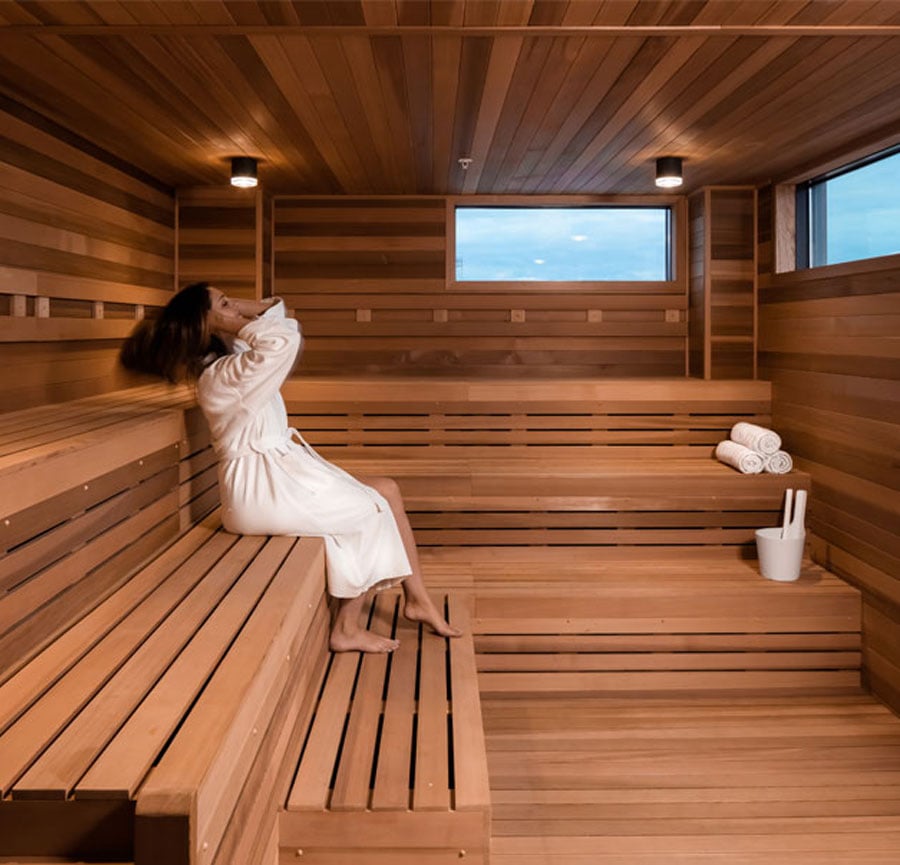Traditional Sauna - Questions
Traditional Sauna - Questions
Blog Article
All about Traditional Sauna
Table of ContentsExcitement About Traditional SaunaFacts About Traditional Sauna UncoveredThe Best Guide To Traditional SaunaTop Guidelines Of Traditional SaunaSome Known Questions About Traditional Sauna.
A lot of the weight lost in a sauna is water loss and is re-gained upon rehydrating. Nevertheless, undoubtedly sauna can be a crucial part of a healthy weight management program. To look at the distinctions between typical and IR saunas, I will certainly separate these right into verifiable, academic, and made differences.Thus, the most popular point in the saunawhich goes to the ceiling straight above the sauna heateris typically in between 185 and 190 F. Claims that a conventional sauna exceeds 200 F is simply not real and not applicable for electrical saunas sold in the United States. The temperature level for a far-infrared sauna is typically set in between 120 and 140 F; nevertheless, unlike the standard sauna, the goal in and IR area is not to achieve a heat.
As a result of this, the temperature level distinction is almost unnecessary, because extreme sweating results in both sauna kinds, but the approach of heating the body is different. In an IR sauna the bather will certainly feel warm and will sweat a lot, however at a lot lower temperature levels (Traditional Sauna). Therefore, if the objective is to invest longer periods of time in the sauna, the IR sauna is an excellent option
When a traditional sauna has been properly heated, the sauna wall surfaces are cozy, the air temperature has actually achieved set temperature level and the rocks are super heated. As an intriguing side note, the warmed wall surfaces and the rocks are releasing far-infrared warmth, combined with the heated air, to produce an "covering warm".
Everything about Traditional Sauna

When the high temperature is achieved, the elements cycle on and off to maintain the high temperature. Many conventional sauna users enjoy pouring water over the rocks to create vapor to elevate sauna humidity degrees. The advantages of putting water over the rocks consist of: making the room more comfy, moistening the nasal flows, and enabling the use of aromatherapy by mixing necessary oils with the water.

When the power enters the body, it triggers the body temperature level to increase and inevitably leads to sweat. In an infrared sauna it's crucial for the emitters/heaters to remain on nearly regularly. Given that there is no mass of rocks to preserve heat, the sauna will certainly cool down if the emitters shut down.
As discussed over, the sauna bather in an infrared room intends to place himself in front of operating emitters to obtain optimal advantage from the warmth. The home heating time for the two spaces can be really different, relying on exactly how the areas are used. For a typical sauna, a bather ought to enable 30-40 minutes for the space to attain a desired temperature level and to properly pre-heat the rocks.
How Traditional Sauna can Save You Time, Stress, and Money.
A well created sauna will typically attain a temperature level of 150-160 F in concerning 30-40 minutes. For hotter temperatures, the space may need to heat for a longer duration.

Conventional saunas tend to be bigger (for this reason use even more electricity) than infrared saunas, although traditional saunas are absolutely offered in one and 2 person dimensions also. For a two-person traditional sauna, 5x6 or 5x7 size is most preferred. The top bench can easily seat 2 or three individuals and is also long sufficient to exist down during the sauna session.
Traditional Sauna for Beginners
The average expense per kWH of power in the united state is around $0.11, so a 4.5 kW heater will cost roughly $.50 to run for one hour, if the heating unit runs continuously for one hour. Generally a sauna heating unit will run for 75% of the very first hour and 50% of subsequent hours on given that the elements cycle once the set temperature level is achieved.

Lastly, there is a hardly ever discussed distinction in the social experience between both areas. While our Read Full Article culture has actually lost a few of the social benefit of the typical sauna experience, it can be extremely socially satisfying (Traditional Sauna). From household time in the sauna, to heart-felt discussions with loved ones, to sauna partiesthe conventional sauna experience can bring about intimate interacting socially
The Traditional Sauna Ideas
Most higher end infrared spaces include tinted light treatment, sound systems and full-glass fronts.
Report this page